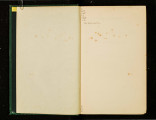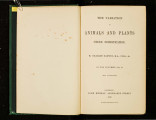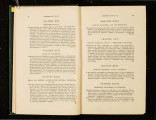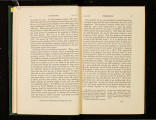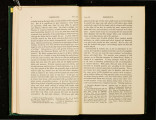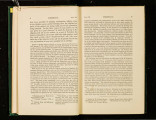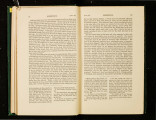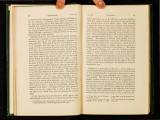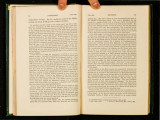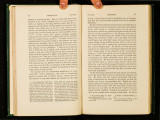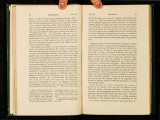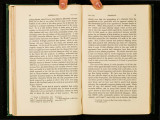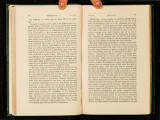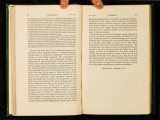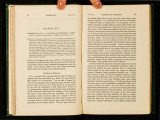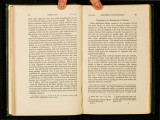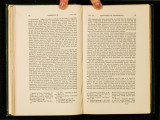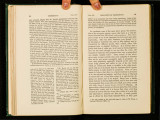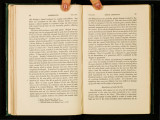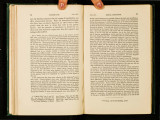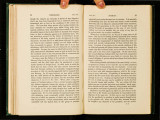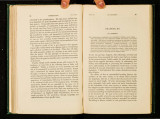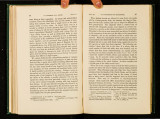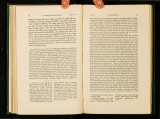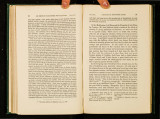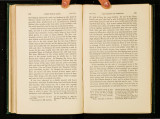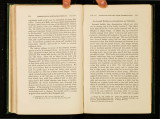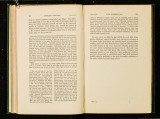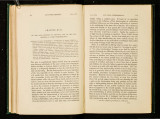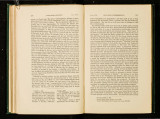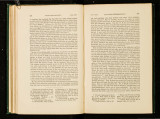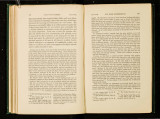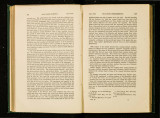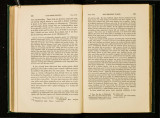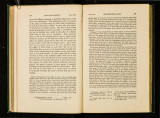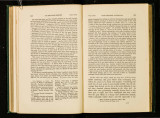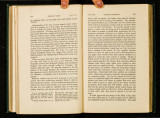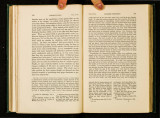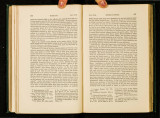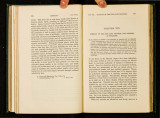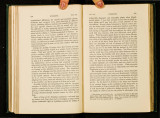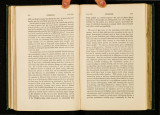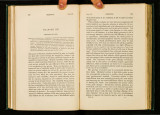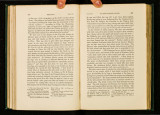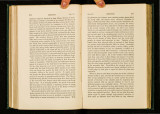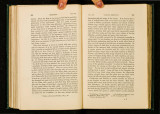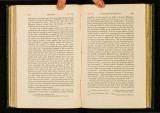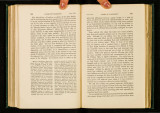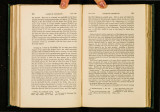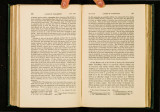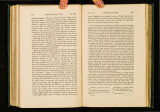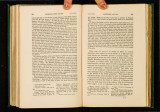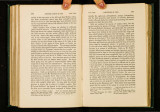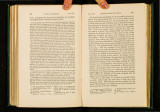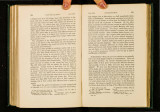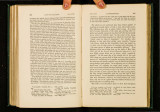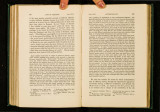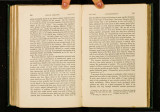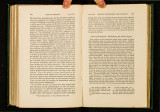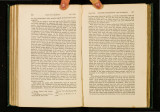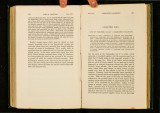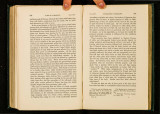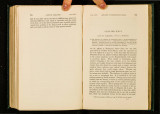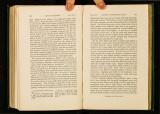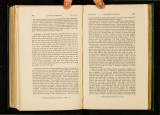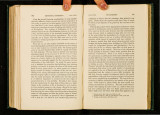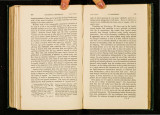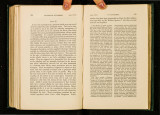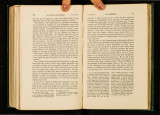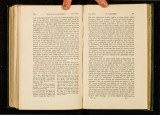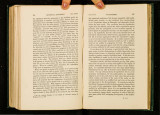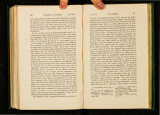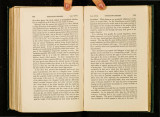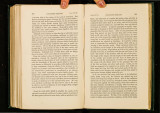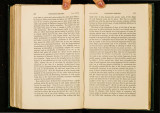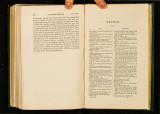| OCR Text |
Show 164 STERILITY FROM CHANGED CONDITIONS. cuAP. xvm. apt to induce sterility; but dwarfed plants of T?"ifolium m~nus and repens, · d · anured d1d not produce growmo- on a lawn often mown an never m ' . any se:d. The tempern.ture of the soil, and the season at which plants k d cc t th · · £ertility as was observed are watered, often have a mar e euec on eu . ' . by Kolreuter in the case of Mirabilis.71 Mr. Scott m the Botaruc Gardens of Edinburgh observed that Oncidium divaricaturn would not set s~e~ when grown in a basket in which it thmve, but was capable of fertili-satw. n m· a pot where I· t was a little d amper · Pelarg. on ium fulg·idurn '.f or many years after I· ts m· t ro d uct w' n, see d ed fr·e.e ly ,· 1't th.e n became stenl. .e ·' now it is fertile 78 if kept in a dry stove dunn~ the. wmter. Oth~r ""vane-ties of pelargonium are sterile and others fer.tile w1thou~ . our bemb able to assign any cause. Very slight changes m th~ positiOn of a pla~t, whether planted on a bank or at its base, sometimes make all the difference in its producing seed. Temperature apparently has a much. more powerful influence on the fertility of plants than on that . of ~llllllals. Nevertheless it is wonderful what changes some few plants will withstand with undiminished fertility: thus the Zephyranthes candida, a native of the moderately warm banks of the Plata, sows itself in the hot dry country near Lima and in Yorkshire resists the severest frosts, and I have seen seeds gath~red from pods which had been covere~ with sn?w du~ing. three weeks.79 Berberis Wallichii, from the hot Khasm range m India, IS uninjured by our sharpest frosts, and ripens its fruit under our cool. summers. Nevertheless I presume we must attribute to change of climate the sterility of many foreign plants; thus the Persian and Chinese lilacs (Syringa Pe1·sica and Ghinensis), though perfectly ~ardy, never here produce a seed; the common lilac (S. vulgans) seeds With us moderately well, but in parts of Germany the capsules never contain seed.80 Some of the cases, given in the last chapter, of self-impotent plants, which are fertile both on the male and female side when united with distinct individuals or species, might have been here introduced; for as this peculiar form of sterility generally occurs with exotic plants or with endemic plants cultivated in pots, and as it disappeared in the Pass·ijlora alata when grafted, we may conclude that in these cases it is the result of the treatment to whiccy the plants or their parents have been exposed. The liability of plants to be affected in their fertility by slightly changed conditions is the more remarkable, as th~ pollen when once in process of formation is not easily injured; a plant may be transplanted, or a branch with flower-buds be cut off and placed in water, and the pollen will be matured. Pollen, also, when once mature, may be kept for weeks or even months.81 The female organs are more sensitive, for Gartnel'82 found that dicotyledonous plants, when carefully removed so that they did not in the least flag, could seldom be fertilised; this occurred even with potted 77 'Nova Acta Petrop.,' 1793, p. 391. 78 'Cottage Gardener,' 1856, pp. 44, 109. 79 Dr. Herbert, 'Amaryllidaccre,' p. 176. 80 Gartnf'r, 'Br.itrage zur Kenntnis~,· &c., s. 560, 564. 81 'Gardener's Chronicle,' 1844, P· 215; 1850, p. 470. 82 'Beitrnge zur Kenntniss,' &c., s. 252, 333. CHAP. XVIII. CONTABESCENCE. 165 plants if the roots had grown out of the hole at the bottom. In some few cases, however, as with Digitalis, transplantation did not prevent fertilisation; and according to the testimony of Mawz, Bmssica rapa, when pulled up by its roots and placed in water, ripened its seed. Flower-stems of several monocotyledonous plants when cut off and placed in water likewise produce seed. But in these cases I presume that the flowers had been already fertilised, for Herbert 83 found with the Crocus that the plants might be removed or mutilated after the act of fertilisation, and would still perfect their seeds; but that, if transplanted before being fertilised, the application of pollen was powerless. Plants which have been long cultivated can generally endure with undiminished fertility various and great changes ; but not in most cases so great a change of climate as domesticated animals. It is remarkable that many plants under these circumstances are so much affected that the proportions and the nature of their chemical ingredients are modified, yet their fertility is unimpaired. Thus, as Dr. Falconer informs me, there is a great difference in the character of the :fibre in hemp, in the quantity of oil in the seed of the Linum, in the proportion of narcotin to morphine in the poppy, in gluten to starch in wheat, when these plants are cultivated on the plains and on the mountains of India; nevertheless, they all remain fully fertile. Gontabescence.-Gartner has designated by this term a peculiar condition of the anthers in certain plants, in which they are shrivelled, or become brown and tough, and contain no good pollen. When in this state they exactly resemble the anthers of the most sterile hybrids. Gartner,84 in his discussion on this subject, has shown that plants of many orders are occasionally thus affected.; but the Caryophyllaceffi and Liliaceffi suffer most, and to these orders, I think, the Ericaceffi may be added. Contabescence varies in degree, but on the same plant all the fl<:>wers are generally affected to nearly the same extent. The anthers are affected at a very early period in the flower-bud, and remain in the same state (with one recorded exception) during the life of the plant. The affection cannot be cured by any change of treatment, and is propagated by layers, cuttings, &c., and perhaps even by seed. In contabescent plants the female organs are seldom affected, or merely become precocious in their development. The cause of this affection is doubtful, and is different in different cases. Until I read Gartner's discussion I attributed it, as apparently did Herbert, to the unnatural treatment of the plants; but its permanence under changed conditions, and the female organs not being affected, seem incompatible with this view. The fact of several endemic plants becoming contabescent in our gardens seems, at :first sight, equally incompatible with this view; but Koh·euter believes that this is the result of their transplantation. The contabescent plants of Dianthus and Verbascum, found wild by Wiegmann, grew on a dry and sterile bank. The fact that exotic 83 'Journal of Hort. Soc.,' vol. ii. 184-7, p. 83. s• ' Beitrage zur Kenntuiss,' &c., s. 117 et seq.; Kolreuter, 'Zweite Fortsetz-ung,' s. 10, 121 ; 'Dritte Fortsetzung,' s. 57. Herbert, 'Amaryllidacere,' p. 355. Wiegmann, 'Ueber die Bastarderzeugung,' s. 27. |




